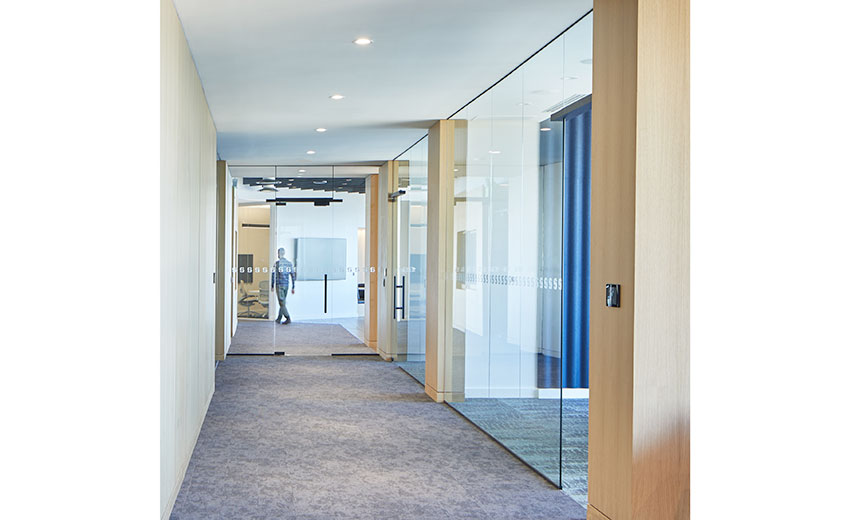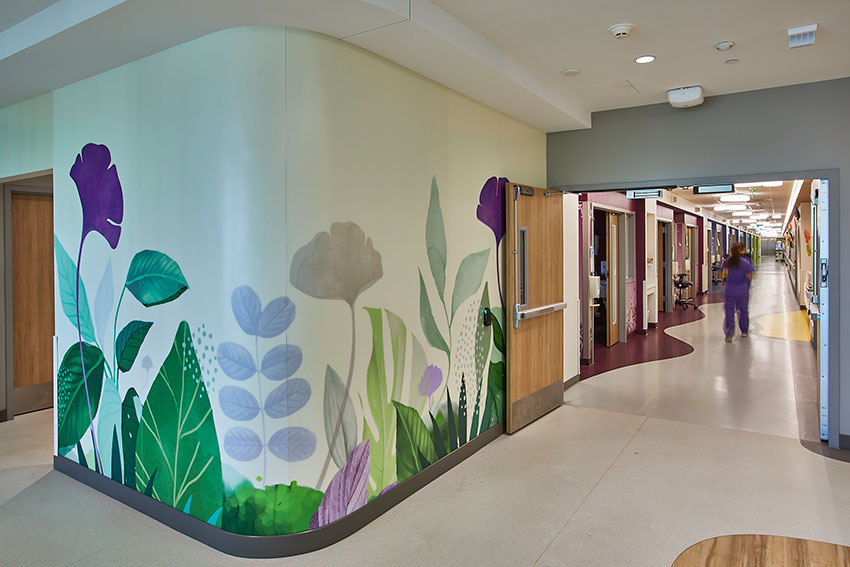Beyond Biophilia
Learning Objectives:
- Explain the benefits to occupants from incorporating increased daylighting and selective visual imagery.
- Specify with confidence the different types of glazed office partition systems available, including framed, frameless, and movable walls, and discuss how glazed partition systems can create modern, open office interiors.
- Demonstrate how printed wall protection successfully integrates design goals with project performance goals, such as
- durability and occupant health.
- Define the unseen advantages of adding printed wall protection and glazing partition systems as part of the interior design, including enhancements to acoustics, privacy, and sustainability.
Credits:
This course is approved as a Structured Course
This course can be self-reported to the AANB, as per their CE Guidelines
Approved for structured learning
Approved for Core Learning
This course can be self-reported to the NLAA
Course may qualify for Learning Hours with NWTAA
Course eligible for OAA Learning Hours
This course is approved as a core course
This course can be self-reported for Learning Units to the Architectural Institute of British Columbia

Photo courtesy of CRL; © Benjamin Benschneider
Elements that enrich the visual experience of the occupant are a key trend in commercial design.
In the face of a world that feels increasingly more cluttered and overwhelming, interior design trends are shifting toward a simpler, streamlined form. Carefully curated color palettes, one or two juxtaposed textures, and warm materials blend to create sleek and harmonious interiors. This trend is exemplified by the expansive use of glass and single, large visual installations.
Big artwork is supplanting busy gallery walls. “Utilizing large statement pieces can make a powerful visual impact to your space, and is perfect for immediately creating a unique, bold energy,” said Dana Anderson of Planning Interiors Inc. in Georgia.1
In terms of materials, glass remains at the top in both interior design and building facades. “Glass can absorb, refract, or transmit light. It has the ability to make any building look more stunning and modern,” said Michael Tobias, Founding Principal of NY Engineers. “Using glass in building facades and interiors enhances the ambience. Interiors appear larger and more open, with abundant natural lighting.”2
“The idea of taking small spaces and expanding them through the use of glass and natural light is as old as glass itself,” said Kyle Matthews, AIA NCARB, Principal, JUST Architecture & Design, Ltd.
When used in combination, or separately, innovations in printed wall protection and glazing partitions offer ideal platforms to shape emergent interior design.
ENHANCING THE INTERIOR VISUAL EXPERIENCE HEADING
The new office interior delivers an unbroken and welcoming landscape, defined subtly by glass partitions and carefully honed visuals that promote daylighting and communicate a streamlined, harmonious aesthetic.
Harnessing the Power of Glass
Glass spans are conducive to dynamic workspaces. Contemporary designs that meet the evolving and holistic needs of today’s office employees are leveraging the beauty and versatility of glass partitions. Scalable glass wall solutions seamlessly define interiors and can be easily customized to the specific needs of a project. Glazed partitions can accommodate conference rooms, office fronts, study rooms, waiting rooms, and lobbies. With the thoughtful efforts of architects, designers, and the glazing community, advanced products and fresh approaches are ushering in a new era of office designs that address key environmental and personnel objectives of constantly adapting workplaces. Whether organizations are pursuing a full-time return or hybrid models, the objectives of the new office environment, and the designs that support those objectives, have been fundamentally transformed. Issues impacting employee well-being, including physical, social, and emotional elements, are central considerations. There are also critical environmental goals that must be accounted for: energy-saving strategies, sound management, and privacy. To meet these evolving needs, innovative new lines of interior glass partitions have been developed for next-generation workspaces.

Photo courtesy of Inpro; © Dan Schwalm
Large-scale visuals allow facilities to customize their walls and clearly communicate a unique design experience.

Photo courtesy of CRL; ©Benjamin Benschneider
Transparency, daylight, and the ability of space to evolve are all characteristics enabled by glazed partitions.
Balancing aesthetic objectives with workplace requirements remains essential. The visual impact of office design is still a critical component when creating both engaging and collaborative spaces, especially within an environment where employees have heightened expectations about how an office space should function. In a research poll of 1,614 North American employees, Harvard Business Review found that access to natural light and views of the outdoors are the number one most desired attribute of the workplace environment, outranking stalwarts like onsite cafeterias, fitness centers, and premium perks including on-site childcare.3 Given this demand, the trend toward glass partitions, which facilitate these desires, is increasing dramatically. Framed, frameless, and freestanding-post partition systems can all have distinct visual impacts in office settings that make a space truly unique. These systems offer a high level of customization. Pivoting and sliding doors that complement glazed partition systems are available with a wide array of door handles such as ladder pulls and deadbolt handles.
Design strategies that deliver energy savings are also essential for today’s designs. Glass partitions play an important role in achieving energy usage goals by replacing opaque partition systems with transparent glass walls. Transparent glass walls can decrease reliance on interior lighting during daytime hours, reducing electrical consumption. By minimizing obstructions, glass partitions excel in allowing natural daylight from exterior-facing windows to diffuse through the interior spaces of an office. With documented research dating back to 1986, daylighting also has consistently been associated with improved mood, enhanced morale, less fatigue, and reduced eyestrain.4 Bright lighting enables enhanced focus and alertness, and well-daylit spaces are generally perceived by occupants to be “better" than dim, gloomy ones.5 Interior glass partitions also permit views of the exterior from multiple points. The consequent reduction of reliance on electrical sources for producing interior light lowers energy costs and decreases a building’s carbon footprint. Depending on the lighting control system used, how well the space is daylighted during occupied hours, and the intended functions of the space, multiple studies in office buildings have recorded energy savings ranging between 20% to 60%, when daylighting is used in place of electric lighting.6 Increasing the use of natural resources, such as daylight, by careful use of windows and glass within the built environment, reduces dependency on fossil fuels as well as the combustion of greenhouse gases.
Additionally, the positive psychological impacts of more natural light are a significant benefit to the overall well-being of occupants. Surveys demonstrate that most office workers would like direct sunlight in their offices in at least one season of the year7 and believe that working under natural daylight is better for their health and well-being than electric lighting.8 Using glass partitions allows workers to enjoy distant, diverse, and dynamic views from the interior and establishes a link to the surrounding environment which fosters connection and creativity.9
Transforming Walls into Art
Another key emerging trend is simplifying the visual narrative in a design. A single large visual element, carefully chosen, can define a space and clearly communicate a narrative. For architects seeking to maximize visual impact in their designs, manufacturers are providing new, high-tech solutions applied through common architectural products.
Notice


www.inpro.com/aspex24


















